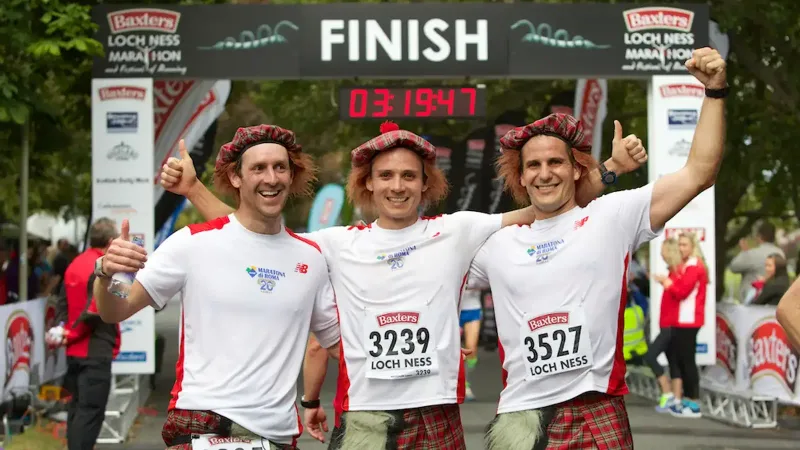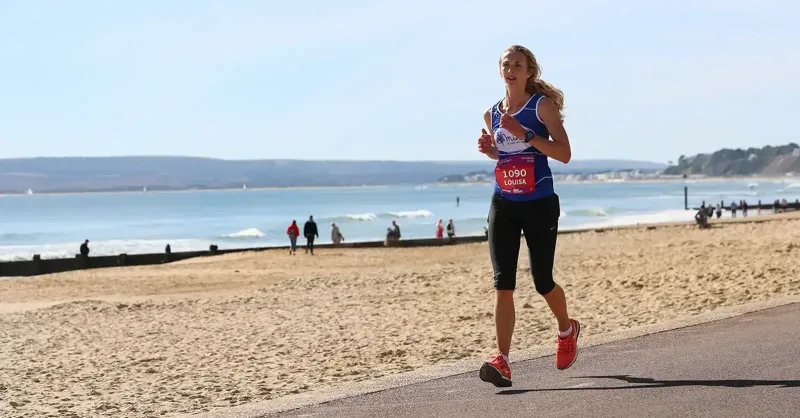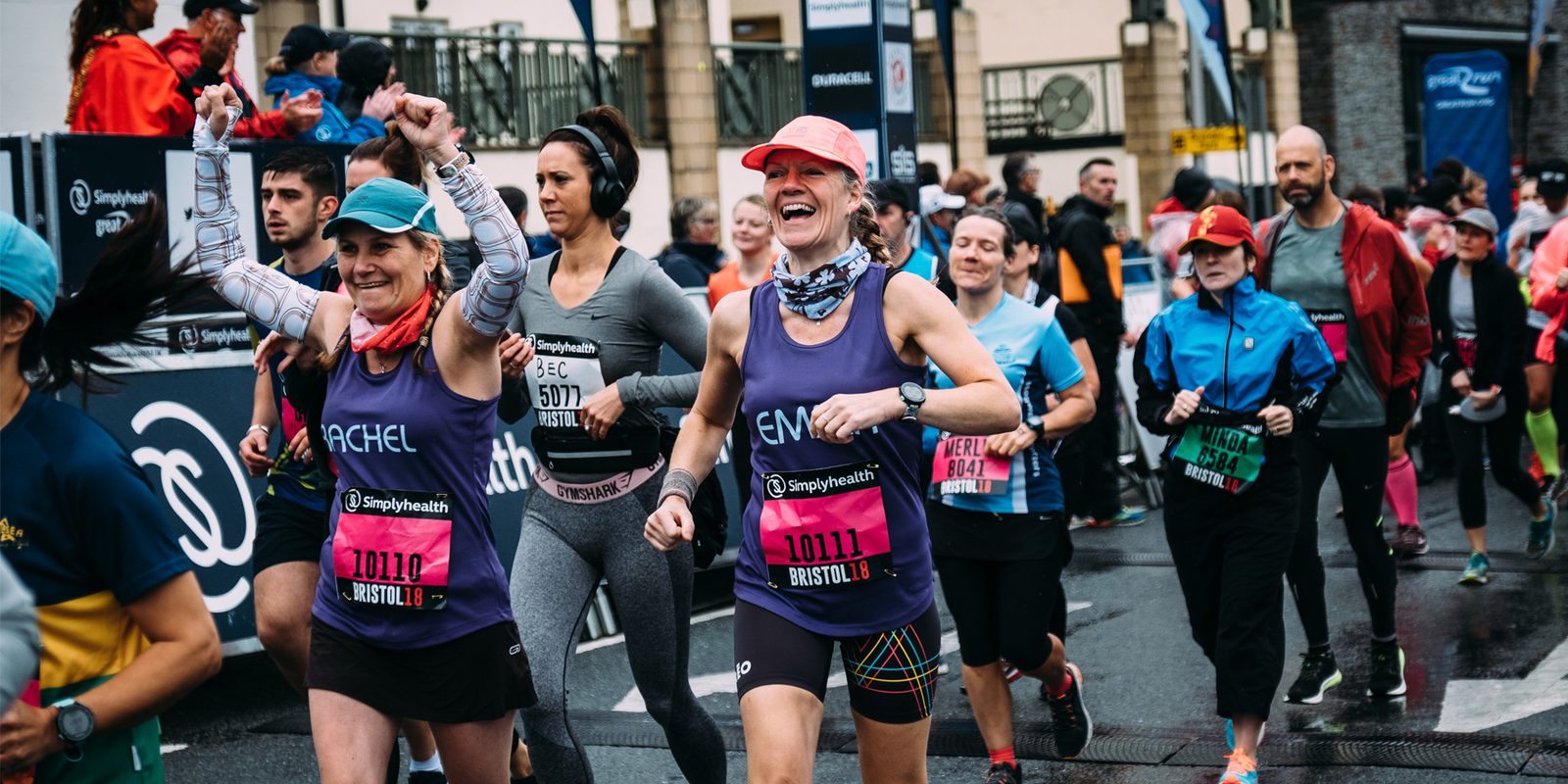Half Marathon Kit List: All The Essentials You Need For The Perfect Race
Making sure you’ve got the right kit, nutrition, hydration and on the day items can make the difference between flying through a great race and 13.1 miles feeling like a very long run indeed.
Whether you’re an experienced road warrior hunting down the next PB, or taking up the challenge of a half marathon race for the first time, preparation is key. Aside from an optimal half marathon training plan leading up to the big day, making sure you’ve got the right kit, nutrition, hydration and on the day items can make the difference between flying through a great race and 13.1 miles feeling like a very long run indeed.
To help you get to the starting line kitted out with everything you need, we’ve put together the ultimate half marathon checklist so all you’ve got to focus on is enjoying the run.
The Half Marathon Essentials
Water bottles and isotonic drinks
Running gels and post-race snacks
Comfortable, quality running shoes
Moisture-wicking technical tops and bottoms.
Waterproof gear or at least a water-resistant running jacket.
A change of clothes and shoes for after the run
Accessories and essentials such as plasters, safety pins and headphones.
Nutrition And Hydration
Avoiding Dehydration
Training well for your race will put you in good stead for a great day, but often runners will push themselves that bit harder than during practice runs. Because of this, hydration is more important than ever - especially during runs during the hotter parts of the year to avoid overheating.
An absolute must-have for race day is a water bottle with a handle. This makes it easy to carry without getting in the way and prevents you from needing to stop at water stations which can interfere with your running rhythm.
Isotonic drinks, which contain a carbohydrate solution, are also a popular choice during or after the race with a wide range of options and flavours available. Prior to race day, experiment a little bit in terms of what you drink to hydrate and how much so you’ve got a clear idea of what works best for you on the day. Making a late decision to buy a new type of drink that you’re unsure how you’ll react to could make a big impact on your enjoyment of the race.
Fueling Up During And After The Race
Your body relies on fat and carbohydrates to get through a run with the latter used as the primary fuel. The body can only store a limited about of carbohydrates ready for use and this can lead to feeling your energy levels dip.
Energy gels offer a very convenient way to increase glycogen levels during a race to give you the additional boost to keep pushing on. Everyone is different in terms of when they prefer to take energy gels as each body processes carbohydrates differently. Be sure to test out brands and flavours as part of your training rather than risking it on the day - upset stomachs and smashing PB’s don’t tend to go together!
After the race, prioritise carbs and pack something that you’ll be able to eat pretty swiftly after the race is over. The celebratory pints can wait (for now) - something that delivers the protein and carbs your body needs is more important short term. Protein bars or flapjacks are a great choice to have nestled in your kitbag at the finish line.
Clothing And Shoes
On a race day, even the little things can make a big difference. Dedicating yourself to a training plan and fueling up perfectly is hard work that you don’t want to be ruined by getting blisters or slogging through 13 miles in a waterlogged shirt. Our gear checklist will help you feel comfortable in clothing and shoes that are designed to support your performance
Running Shoes And How To Choose
It’s best to get some specialist running shoes and also talk to a specialist who can identify the perfect level of support to match your gait and level of pronation before upping your mileage during training. And whilst it’s best to avoid the beaten-up pair that have been sitting in the back of the wardrobe for a few years, never debut your brand new pair of shoes on race day. You never know how it will make the muscles in your feet feel and might result in a painful few miles.
Running Tops, Shorts & Tights
Avoiding 100% cotton t-shirts is a good rule to follow as it tends to trap heat and sweat and remember not to overdress - once you’ve started a run and your heart rate increases, your body can feel up to 15 degrees warmer so don’t wear any more layers than you need to. A comfortable technical running top will keep your temperature regulated and if it does rain, won’t absorb too much water and weigh you down.
The same applies to shorts and tights too - you need to feel like you can keep moving and stay ventilated without any restriction on your movement. Running tights should feel more like a second skin, so make sure they’re a good fit whilst shorts should offer moisture-wicking and ventilation to keep you cool.
Weatherproof Gear
Speaking of rain….it is amazing how much the weather can change even during a half marathon race. Weatherproof gear is a kit bag must-have with a quality, lightweight running jacket a priority, allowing you to make a judgement call on the day and optimise your base layers underneath. Look for a slim cut to ensure freedom of movement and consider packability when choosing a jacket to maximise space in your kit bag
Post Race Change Of Clothes
Make sure you also pack some warm dry clothes and a fresh pair of shoes to change into after the race. Your body temperature will drop quite steeply which makes a comfortable, dry change of clothes important to avoid getting too cold.
Accessories And Essentials
Blisters And Chafing
From your training you’ll know if you have any recurring issues with blisters, chafing or any discomfort. Even if that hasn’t been the case, still pack some blister plasters for the day and some anti-chafe balm so you can be confident you’re ready for anything.
Headphones
Most of us run better to a beat with the perfect playlist making a big difference to the enjoyment and quality of a half marathon. Make sure you check your chosen race allows headphone usage on the day and select a pair that has some level of water protection to withstand sweat and rain. You also need to know they’re going to stay comfortably in your ear, so think twice before popping your old iPhone headphones into your kitbag, Last but not least, if you’ve opted for wireless headphones get them fully charged and ready to last for all 13.1 miles.
Safety Pins
Often you’ll be provided with everything you need to affix your race number to your top, but to be sure it is securely attached and doesn’t distract you bring four spare safety pins with you. This way no matter what you’ll be able to safely fasten each corner of your number to yourself and run without worrying about your number at all.
Wet Wipes And A Towel
Depending on the weather and if you’re straight into the celebrations, packing a towel and some wet wipes are your best bet for drying off, cleaning up and feeling comfortable as you soak in that well-deserved runners high.
Looking for your next great challenge? Take a look at our calendar of 2021 and 2022 half marathons.
Image: Great Run Bristol, © Great Run
More from the guides

Winter running guide: how to keep running when it’s dark, cold, and you’d rather stay inside
03 Nov 2025
Running through a British winter takes a bit more planning and a lot more persistence than the sun-drenched summer evening jogs. The mornings are dark, the…
Read on
Best Winter Running Events in the UK 2025–26
19 Oct 2025
Looking for winter running motivation? Discover the best UK events for 2025–26, from festive 5K runs and scenic trails to fast half marathons that keep you…
Read on
Fastest 10k races in Scotland – Inverness, Glasgow and beyond
07 Sept 2025
Looking for a quick 10k in Scotland? From the record-breaking River Ness race to Glasgow’s fast park loops and new coastal courses, discover the events that…
Read on
The fastest 10k races in the South West
07 Sept 2025
Explore the fastest 10k races in the South West. From flat seafront routes in Weymouth and Exmouth to the city streets of Southampton and Exeter, find the…
Read on